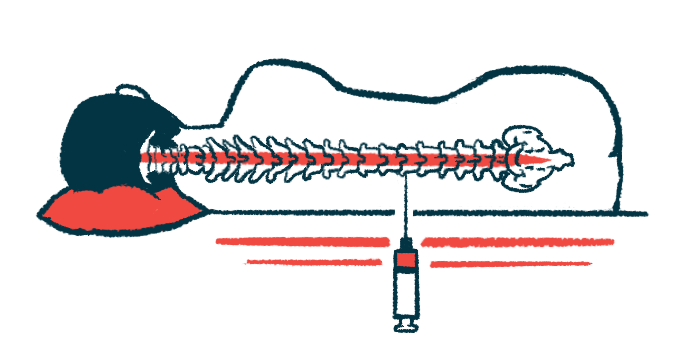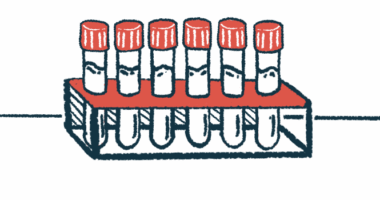Treatment with jacifusen shows benefits for some FUS-ALS patients
2 expanded access program participants seeing disease progression reversals

Treatment with the experimental therapy jacifusen was generally well tolerated and appeared to slow or even reverse disease progression in some people with amyotrophic lateral sclerosis (ALS) caused by mutations in the FUS gene.
That’s according to data from 12 people who received the therapy as part of an expanded access program. Data from these cases also indicate jacifusen decreased nerve damage. The study, “Antisense oligonucleotide jacifusen for FUS-ALS: an investigator-initiated, multicentre, open-label case series,” was published in The Lancet.
While the causes of ALS aren’t fully understood, some cases are the result of genetic mutations. Mutations in the FUS gene are a rare cause of ALS, accounting for only 1 or 2 out of every 100 cases, but they tend to cause very aggressive disease with symptom onset in adolescence or early adulthood. Mutations in the FUS gene lead to the production of an abnormal FUS protein, which is thought to drive damage to nerve cells.
Jacifusen, also called ulefnersen or ION363, is an experimental therapy designed to reduce mutant FUS production by interfering with how FUS is read to produce the protein. The therapy is administered by injection into the spinal canal, or an intrathecal injection.
‘We do not expect to see clinical improvement’
This study reported on the outcomes from 12 people with FUS-ALS, ages 16-45, who received jacifusen as part of an expanded access program, which allows experimental therapies to be used outside of clinical trials. The participants received the therapy in tailored treatment protocols and for a median of 9.3 months. The main goal was to assess its safety.
The therapy was generally well tolerated, with no serious side effects reported. The most common side effect deemed as possibly related to the therapy was headache.
In most participants, levels of neurofilament light chain (NfL) — a marker of nerve damage — decreased by up to 82.8% after six months of treatment. This differs from the typical progression of ALS, where NfL levels increase and remain elevated as the disease advances.
Despite decreases in NfL, most patients continued to have worsening disease progression with jacifusen, with two notable exceptions.
One patient, a young woman diagnosed as a teenager, saw worsening disease progression for about the first year of treatment and her scores on the ALS Functional Rating Scale-Revised (ALSFRS-R), a standard measure of disease severity, worsened from 28 points to 8 points over the first 16 months. But after that, her condition reversed course and, over the following year, her score rose to about 20 points, where it’s remained as of the latest follow-up. In concrete terms, this means she regained abilities she’d lost, including walking unaided and breathing without a ventilator. The woman is still alive and has lived the longest of any documented case of a person with symptomatic FUS-related ALS.
“When testing new drugs for ALS, we do not expect to see clinical improvement,” Neil Shneider, MD, PhD, co-author of the study at Columbia University, said in a university news story. “What we’ve seen in one patient is really unprecedented functional recovery. It’s surprising and deeply motivating for us, the ALS research community, but also the community of ALS patients.”
Possibility of delaying disease onset
Most participants started jacifusen when their symptoms were already quite advanced, but a man in his 30s started before he had any overt symptoms. He did have a family history of FUS-related ALS and a mutation in the FUS gene, and tests indicated reduced electrical activity in his muscles, which clinicians determined were likely an early sign of disease onset.
The man has been on jacifusen for three years and hasn’t had any symptoms. The electrical activity of his muscles also improved.
“Although we cannot be certain if or how [this patient] would have progressed clinically had he not been treated, this case suggests the possibility that jacifusen could be used in carriers of [ALS-causing FUS mutations] to delay or prevent disease onset,” the researchers wrote.
Ionis Pharmaceuticals is sponsoring a Phase 3 clinical trial (NCT04768972) of jacifusen in people with ALS who carry FUS mutations. The participants will be given the therapy or a placebo, with the main goal being to assess its effects on ALSFRS-R scores.
“Now we are eagerly awaiting those results, which we hope will lead to the approval of [jacifusen],” said Shneider, an investigator on the Phase 3 study.






